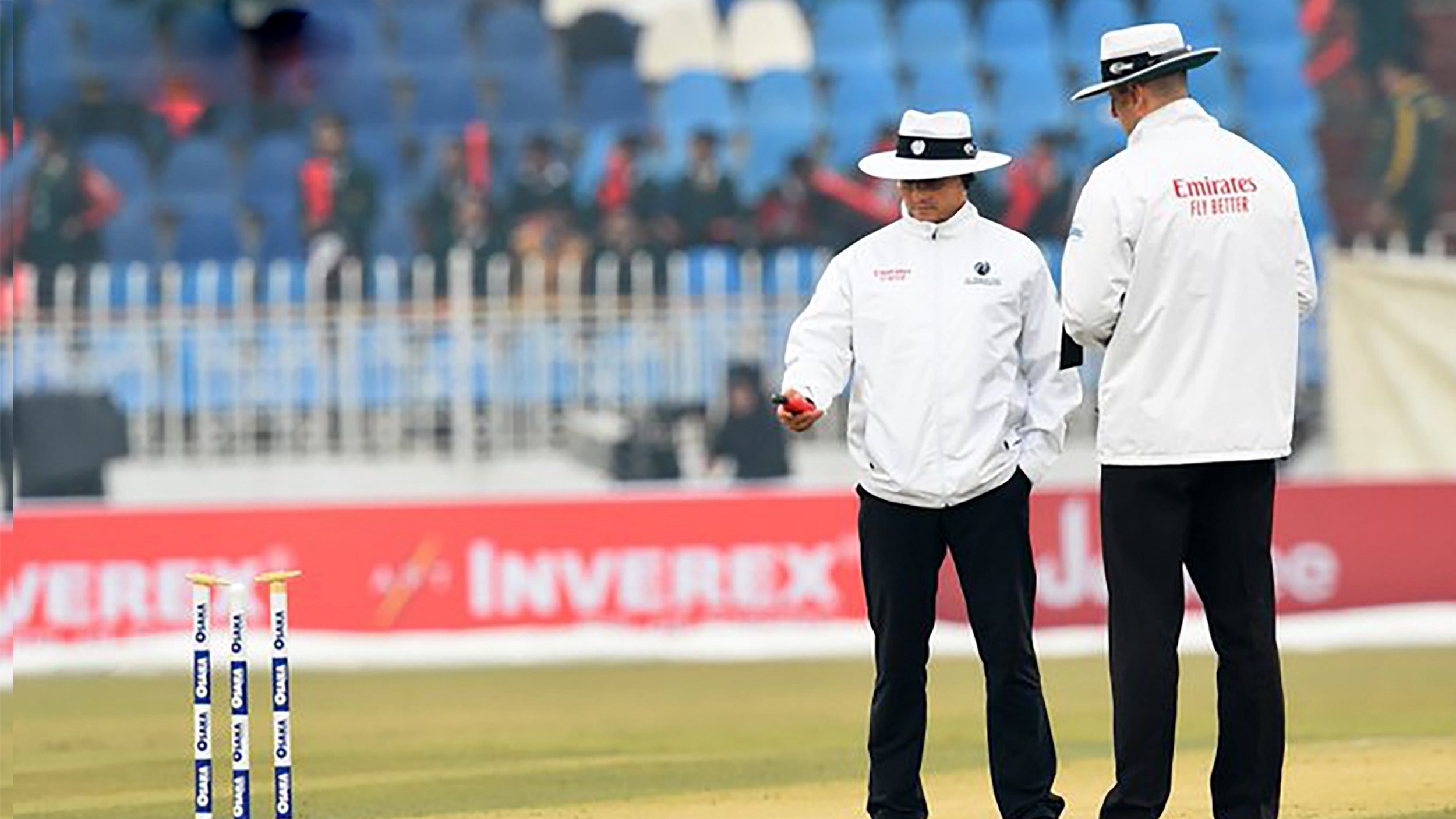Bad light stops play! Cricket’s age-old problem

Drizzle, dark clouds, bad light, light-meters, wet outfield, super-soppers, and umpire inspections… that was the story of the second Test at Southampton between England and Pakistan. There was a little bit of cricket played between spells of bad light but nothing more than 134.3 overs across five days. The Test was the ninth shortest in England in terms of balls bowled. The problem of bad light in cricket is not new.
The Story so far
There have been many issues in cricket that have been answered and eliminated through the use of technology. Improved drainage has resulted in much shorter delays due to rain and the rate of scoring. The protective gear, playing equipment, and bats have undergone an immense technological change. But the bad light problem has been one area that has not been heeded since forever.
The weather cannot be controlled and therefore the rain-enforced breaks in cricket are unavoidable. But the bad light problem? That is certainly preventable. The fact that an entire Test match was wasted due to lack of light in the 21st century sounds laughable and bogus.
Let’s also not forget that this is a series being played in the midst of a global pandemic. The ECB left no stone unturned to make this series possible and give some oxygen to a cricketing edifice severely running out of breath and cash. And after all the efforts, waiting for the light to turn bright for cricket to be played is not the best way to avoid a financial meltdown.
How does bad light affect the game?
Bad light puts the batsmen, wicket-keepers and even fielders at physical risk as spotting the ball becomes a lot more difficult. The umpires stop the play when the light is low enough – “that there is an obvious and foreseeable risk to the safety of any player or umpire so that it would be unreasonable or dangerous for play to take place”.
What can be the solutions?
“It has been a huge talking point but it needs to be addressed somewhere somehow.” The incumbent English skipper Joe Root, alongside many, is of the view that the issue needs to be addressed somewhere and somehow.
Option 1
The colour of the ball used in Test cricket is the most discussed option for solving the bad light issue. The use of the pink ball has been voiced by many as a possible solution for its bright colour is easy to spot in low light. The traditional red ball is regarded as difficult to see under floodlights and overcast weather. However, there are concerns about the pink ball’s behaviour under overcast conditions and rain.
Option 2
Brighter floodlights appear to be another potential solution – both viable and easy. In the Test at Southampton, the floodlights were on for almost the entire duration but did not seem to suffice or even improve the bad light situation too much.
Option 3
The ICC and ECB have also mulled over early starts to give more time to the game in such situations. Tests in England begin at 11:00 BST (3:30 PM IST). However, on day four, two hours of good weather were simply wasted and when the teams took the field, they had to leave after an hour of play due to rain and bad light.
The ICC has reportedly agreed for a 10:30 AM start, which means the first session will be extended by half an hour. However, even by the best bowling rates, not more than 7-8 overs can be bowled in half an hour. No matter the form of a solution, it is in the best interest of cricket that the age-old problem of bad light is given due attention.
